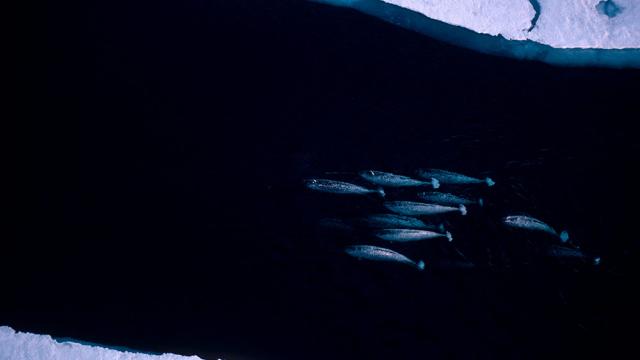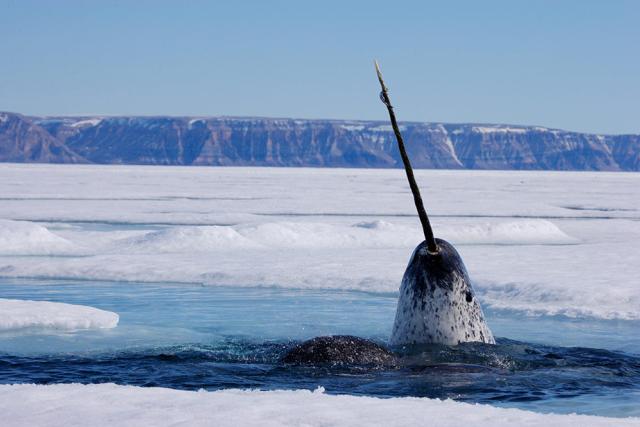
Narwhal's tusks
Narwhal's are arguably the most iconic whale on Earth because of their beautiful counter-clockwise spiralling “horn”, which can be up to 3m long. This horn is in fact a tusk – a canine tooth protruding from the whale’s upper lip. It’s mostly male narwhals who have a tusk - sometimes they even have two. They use their tusks for fighting and foraging, but the tusk also helps them detect changes in the water around them.
Recent footage has discovered a narwhal stunning fish with the side of its tusk.
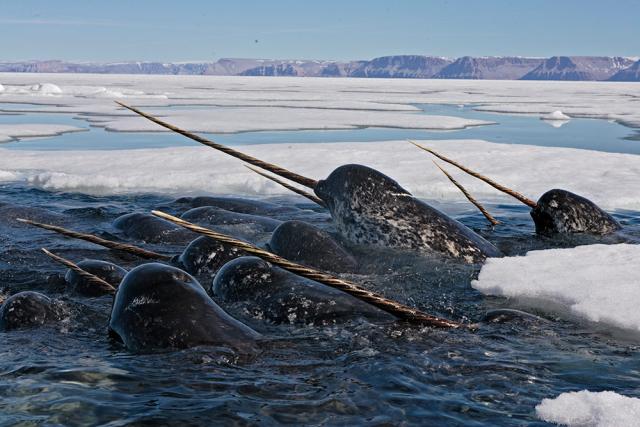
Perfectly evolved to thrive under ice
In summer, narwhals can be found in shallow, ice-free bays, but they’re totally adapted to living amongst thick sea ice. They evolved without a dorsal fin, allowing them to travel closely under ice and reduce heat loss. In the winter, narwhals move deep into ice-covered ocean with very little open water, where they feed on squid, shrimp and fish, possibly at the bottom of the sea.
Narwhals are incredibly social creatures, using whistles to call to each other. They form groups of up to thousands when they migrate.
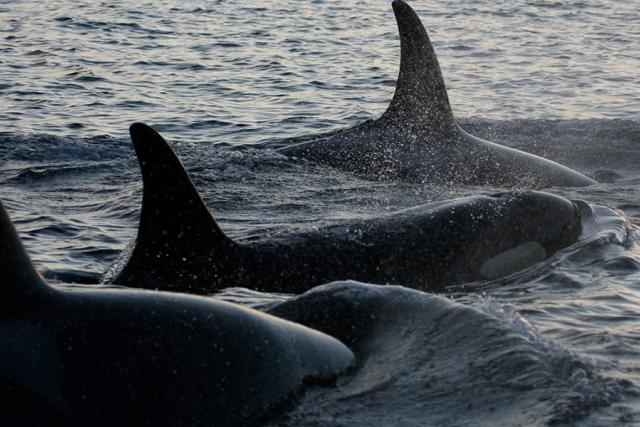
Climate Change
Killer whales, with their tall dorsal fins, aren’t designed for swimming amongst thick sea ice. But melting ice means these predators have a whole new feeding ground to hunt in. And they hunt narwhal.
Satellite tracking of both narwhal and killer whales at the same time shows that narwhal behaviour is changing as killer whales encroach, moving them to shallower waters where food is more limited.
Narwhals evolved to use sea ice as protection against predators - now hundreds of thousands of years of evolution is worthless. In mere decades their advantage is being lost.
Climate change can also cause sudden local changes in weather and sea ice cover, occasionally freezing shut the very openings in the ice that whales use to breathe air. Hundreds of narwhals can become entrapped in small openings and die.
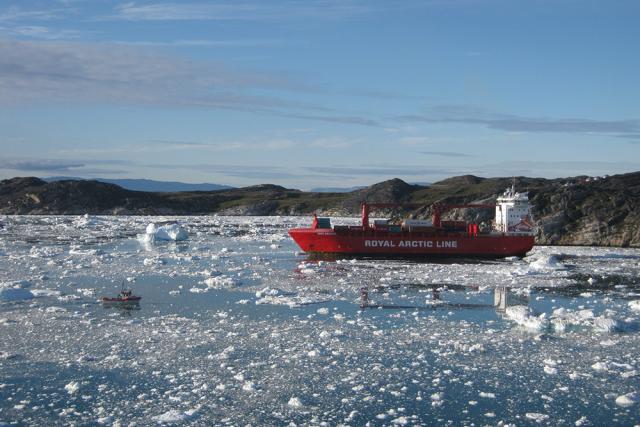
Ocean Noise
Until recently, the Arctic Ocean's ice cover made it a natural “acoustic refuge” for marine animals for much of the year.
Sound travels about 4.5 times faster and 60 times further in water than in air. It can travel the length of 15 football fields in one second.
Shipping, infrastructure development and oil and gas exploration cause underwater noise pollution. Since whales depend on sound to communicate, any interference can negatively affect their ability to find food and mates, navigate, avoid predators and take care of their young.
Human-made noise is only set to worsen as the Arctic becomes more accessible, and Arctic shipping traffic is expected to quadruple by 2025.
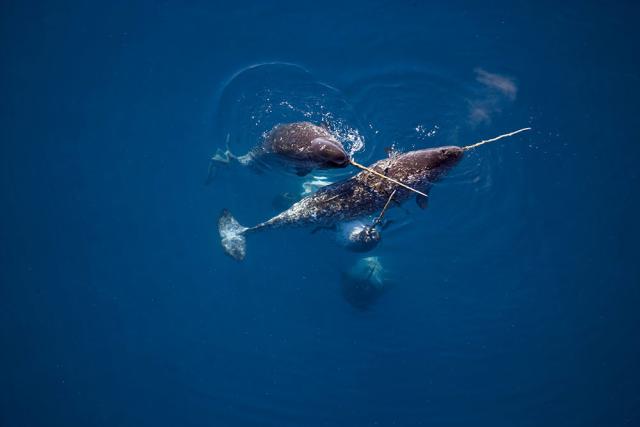
What do we do
- We’re working to limit noise pollution in Arctic waters by making parts of the ocean off-limits to particularly loud industrial activities.
- We’re advising communities and governments on the risks of shipping traffic and best practices.
- We’ve created maps and posters for Canadian ships to help mariners identify and avoid marine mammals.
- We’re tracking narwhals from space – we're working with partners to fit satellite radio transmitters to narwhals to investigate their seasonal movements, to understand whether habitat use has changed with changing sea ice, and which areas are vital for protection.
- We’re looking at how shipping routes overlap with narwhal habitats. If areas are important for raising calves for example, we can use this information to advocate for protection from shipping.
From the field
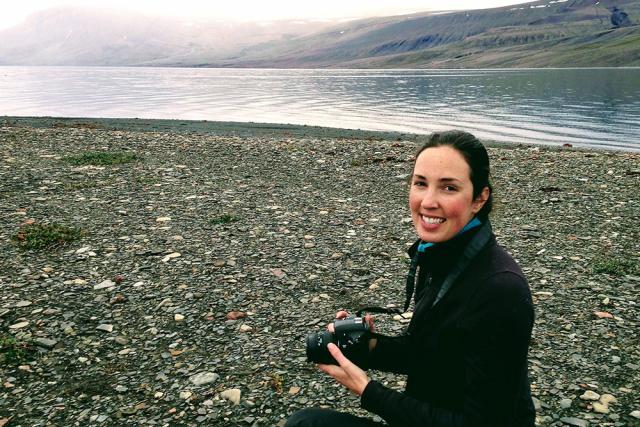
Narwhal Camp...
Melanie Lancaster, our Arctic species expert, took part in the 2017 and 2018 “narwhal camp”, in Tremblay Sound in Canada’s high Arctic. Around 90% of narwhal spend their summers in Canadian waters, so scientists camp out for weeks, researching narwhal behaviour and movements in this ecosystem teeming with life.
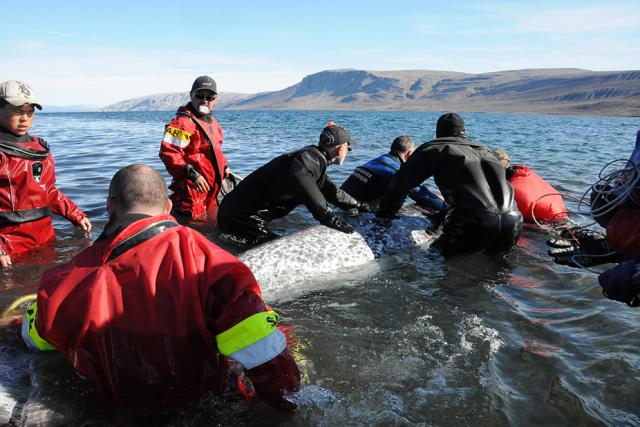
Tagging Narwhals
"As the sea ice started breaking up in Tremblay Sound, the narwhals began to arrive. One morning in August at 2.45am, there was a tap on my tent: “They’re here!” Poking my head out, I looked out over the water. Hundreds of narwhals were swimming into the Sound! Some were alone, others in groups, mothers with young, and big males with long tusks that pierced the air as they surfaced. It was a sight I’ll never forget. The night was so still you could hear them exhale.
Over the next few hours, about 3,000 narwhals congregated. They became a familiar backdrop as they jousted with their tusks and lay near the water’s surface, seeming to enjoy the Arctic sunshine. While I was in camp, six narwhals were fitted with satellite transmitters so we can learn why they use Tremblay Sound and help to protect this important habitat.
Projects like these are vital for ensuring that important habitats for narwhal are protected into the future. I’m incredibly proud to be part of this work."
What happens in the arctic, doesn't stay in the arctic
“We are waking a sleeping giant as a result of climate change. What happens in the Arctic doesn't stay in the Arctic. It's on the UK’s doorstep and it affects us all.”
- Rod Downie, Chief Polar Advisor, WWF
Climate change poses a huge threat to our future. If we lose the battle to stabilise the polar regions, people and nature around the planet will suffer. There could be increased water shortages, changes in food production, and more extreme weather events – from flooding to droughts.
Climate change is driven by us, but it can be fixed by us.
Thank you for supporting WWF.
